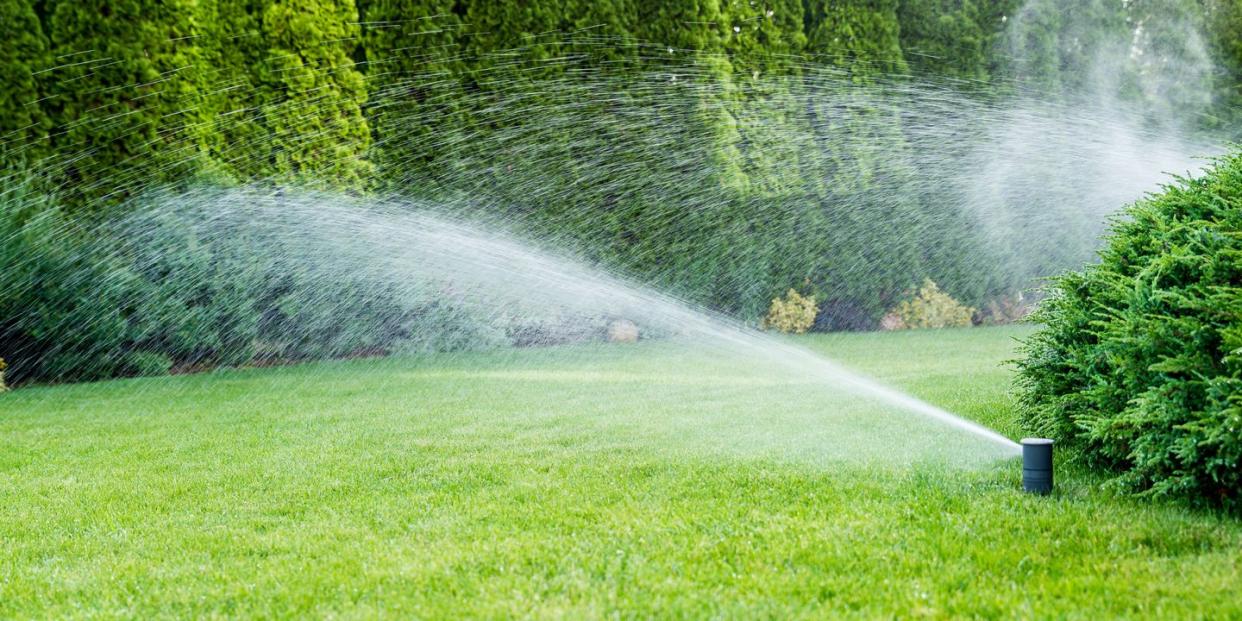The Best Time to Water Your Lawn, According to Experts

It may seem super-convenient to set a timer on your sprinkler to water your lawn, but that’s not the best approach. A schedule doesn’t take into account all the environmental conditions which affect turfgrass, such as heat, humidity, rain and wind. “You have to find that sweet spot about when to start watering,” says Peter Landschoot, PhD, professor of turfgrass science at Penn State University. “If you start watering too early, you’re wasting water and money. If you wait too long during a drought, watering won’t help. It’s almost a lawn by lawn basis.” So here’s what you need to know about watering the right way (and time!).

When is the best time to water my lawn?
The early morning hours are the best time to water your lawn for the least amount of water loss. “In the morning, the sun is at a low angle, it’s cool, and more water gets to the plant roots,” says Landschoot. “If you wait until afternoon, water ends up on the leaf surface and evaporates, and the root systems shut down in the heat and cannot take up water efficiently.” Aim for watering before 9am.
Watering at night is second best, if you didn’t get around to it during the morning hours. If it’s hot and humid, there’s some risk you may end up with more disease problems because the water sits on the leaf surface all night long along with the dew. But it’s still preferable to afternoon watering when the sun is hottest and the most water evaporates before the plants can use it.
How can I tell if my lawn needs watering?
Every lawn does not need to be watered every day, unless it’s a new lawn that you’re trying to grow from seed or sod, says Landschoot. For established lawns, watch for the signs that it’s time to water: if the grass turns bluish-green, the leaf blades wilt or appear to turn in on themselves, or footprints remain in the turf after walking on it. At this point, it’s time to water. When you do water, water deeply; watering every day for short periods encourages a shallow root system, which makes it less drought tolerant.
How should I avoid using too much water?
If you’re in a drought, try to keep traffic from kids, pets, and vehicles off the lawn to minimize damage. Turfgrass may turn brown and look like it’s dead, but the crown and roots still are alive. “Many times, it goes semi-dormant but usually recovers,” says Landschoot. In fact, grass can survive for weeks without thinning if it’s watered or starts raining again. If you have other questions about your lawn or the type of grass in your region, your local university coop extension (find yours here) is a good place to start.
Follow House Beautiful on Instagram.
You Might Also Like


